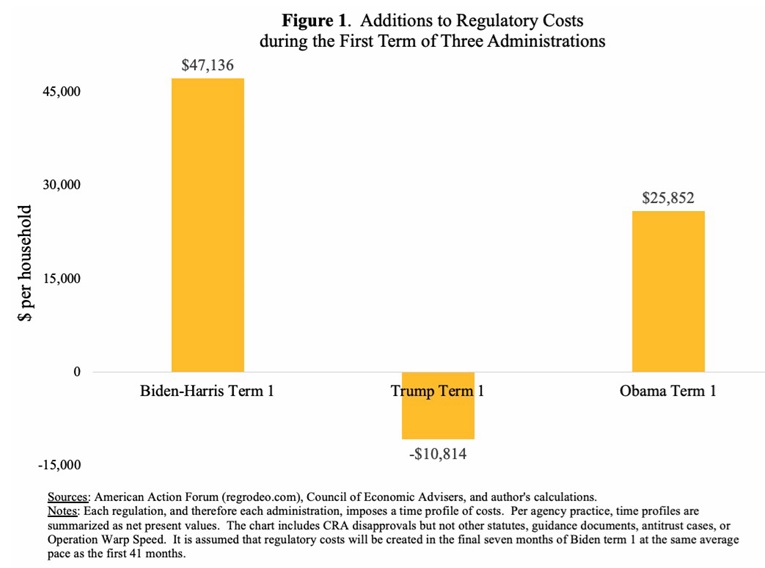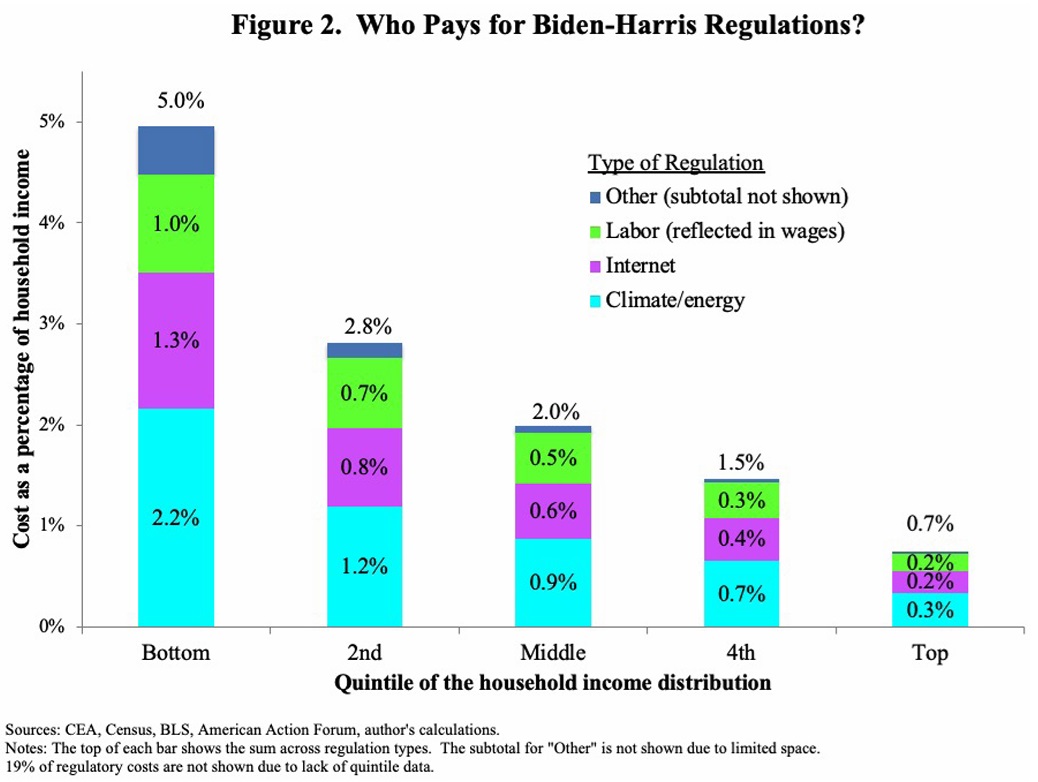So far in this series, we have looked at what a second Trump presidency might mean for the following three issues.
- The number of government bureaucrats.
- Controlling the burden of federal spending.
- The Department of Government Efficiency.
Today, let’s contemplate what the second coming of Trump means for regulation.
This is an issue where I am very hopeful, and the reasons for my optimism are captured in this chart.

The chart is from a new report from the Committee to Unleash Prosperity. Here are some excerpts from the study, which was authored by Professor Casey Mulligan from the University of Chicago
The Biden-Harris administration’s regulatory costs exceed the first-term Obama administration’s by a factor of 1.8. …The Biden-Harris administration stands out for a few relatively costly regulations… The Trump administration’s results are entirely different. President Trump was on net reducing regulatory costs (more than $1 trillion), as compared to increases of $3 trillion (Obama Term 1) and $6 trillion (Biden-Harris Term 1). …the Biden-Harris administration’s first-term rulemaking is on pace to add $5.8 trillion in net present value. Assuming that the U.S. has 123 million households, the amount…is equivalent to about $47,000 per household. … President Trump showed that regulatory costs can be subtracted rather than perpetually added. President Trump’s first term reduced regulatory costs by about $11,000 per household. …With overall regulatory costs on the order of two percent of GDP, it is likely that new federal regulations will contribute to low or negative rates of productivity growth and wages that fail to keep up with inflation.
The bottom line is that Trump was largely good on red tape in his first term and I can’t think of any reason he would be change course in a second term.
For what it’s worth, the best part of the study from my wonkish perspective are the estimates of the regulatory burden on different income groups.
Here’s some of what Professor Mulligan wrote.
So far, regulatory costs have been described in the aggregate, as the regulatory agencies do. To understand how those costs are distributed across the income distribution, it is essential to assess the extent to which the goods produced by regulated industries are necessities or luxuries… Recall that much of the regulatory costs serve to increase the prices of automobiles, internet, energy, and major appliances. Each of these is a necessity. …Figure 2 shows the results for the 81 percent of Biden-Harris administration regulatory costs that can be allocated across the income distribution. …For categories combined, the regulatory costs range from 0.7 percent of income in the top quintile and 5.0 percent at the bottom.
Here’s the aforementioned chart estimating regulatory costs as a share of household income for the five quintiles.

I’ve explained before that regulation makes people navigate an obstacle course. Mulligan’s research shows that it is proportionately more costly for lower-income groups to deal with that hassle.
Biden increased those costs. Let’s hope Trump reduces them.


